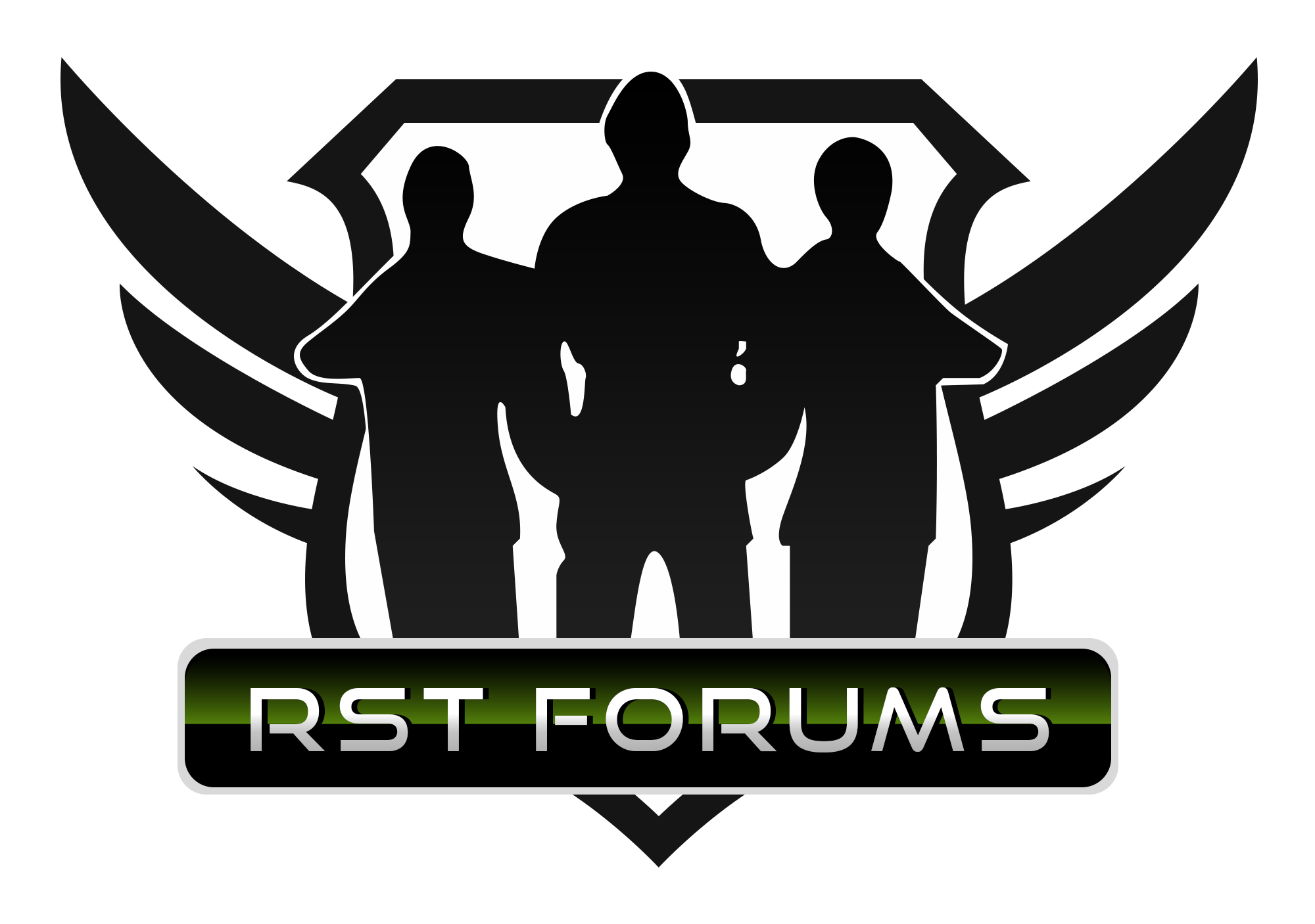-
Posts
3206 -
Joined
-
Days Won
87
Everything posted by Fi8sVrs
-
sau poti folosi butoane flash Free Menu Maker http://www.flashation.com/fire.html
-
fileserve: Downloader - FileServe.com - No limit ! dla filesonic: Downloader - FileSonic.com - No limit ! wupload: Downloader - Wupload.com - No limit !
-
How to find hidden rootkit in system? Well, most of the antivirus fails when it comes to locating the hidden stuff. I have been in such a situation a few days back where I was sure that my system is infected but, my anti and firewall plus spyware removal tools were giving me a green signal stating that my system is secure and yea according to them my system was not infected with any worm, virus or trojan horses Why so, if I was indeed infected? Because, malware developers inject worms into hidden processes, modules and services and your anti bypass them because most of the antis are not designed to look into hidden modules. To overcome this limitation of antis, spyware removal tools you can use a special tool which is designed keeping the same concept in mind. Yea, I am talking about none other than GMER. What’s GMER? It’s a rootkit detector and remover, it scans for: · hidden processes · hidden threads · hidden modules · hidden services · hidden files · hidden Alternate Data Streams · hidden registry keys · Drivers hooking SSDT For more information and download visit gmer.net. Source
-
cum din imagini? te referi lacele de pe trilulilu din meniu?: Acasa | Video | Muzic? | Imagini | Jocuri | Membri | Upload cand pui cursorul deasupra lor sa se schimbe culoarea?
-
This tutorial prepares the Oracle Database 10g Express Edition Developer to perform common development and administrative tasks of Oracle Database 10g Express Edition. Learning Objectives After taking this tutorial, you should be able to: Install Oracle Database 10g Express Edition Access the Oracle Database Home Page Manage Database Objects Access and Manipulate Data Create an Application using HTML DB 2.1 Add PL/SQL Functionality to an Application Administer and Monitor the Database Create an Application using Visual Studio .NET Create an Application using PHP Start Tutorial Download Tutorial More Oracle Tutorials Last updated: March 1, 2006 Copyright @ 2006, Oracle. All rights reserved
-
»SQL Performance Explained« is a free SQL tuning e-book for developers. It avoids unnecessary details about database internals but highlights the one topic that is most often neglected: proper indexing. Volume 1 Basic Indexing Download Now Volume 2 Advanced Indexing Coming 2012 Complete Web Edition Continuously Extended Visit »Use The Index, Luke« Now SQL Performance Explained | Free SQL Tuning and Indexing e-book Download
-
profesional ... 35 - 40$ http://themeforest.net http://www.templamatic.com/ http://www.buystockdesign.com/
-
(Or, How to sync an iPhone with one computer and manually manage music and videos on another). Note: This tutorial allows you to add music/videos/podcasts from multiple machines. If you just want to sync PIM (Contacts/Calenders etc) on one machine and media on another there’s a simpler way. On the computer you want to sync contacts/calendar with select only these items and perform a sync. Now, on the second machine enable Music/Photos/Etc and perform a second sync. You will be warned the media library will be deleted, but as there’s no media this is fine Because I do most of my music listening at work and my Calendar/Address book are kept in Outlook I have my iPhone setup to sync with my office PC. When I’m at home however I find I also want to put music/podcasts/videos on my iPhone for the weekend or trips. Normally it’s only possible to sync media on an iPhone with one computer. If you try to use a second computer you get the warning below that "the iPhone XXX is synced with another iTunes library. Do you want to erase this iPhone and sync with this iTunes library"? However, I’ve found an easy fix for this. In the instructions below I’ll show how to modify any iTunes Library so it can also be synced with your iPhone. You can then either manually manage your iPhone on a second computer, or sync different data on different machines (E.g. Music at home, Contacts/Calendar at work). The instructions below use the example of modifying the iTunes library on my home Mac to work with my existing iPhone/PC setup. If your existing library is on a Mac, or both machines are of the same type, then the steps are identical. Notes On the PC you can find your iTunes folder in your "My Music" (XP) or "Music" (Vista) directory. On the Mac it is in your Music directory. For the editing part, I recommend UltraEdit on the PC and a combination of TextExit / HexEdit on the Mac. Any hex editor will do, and you only need to edit files on the second machine. After completing these steps you will be able to sync your iPhone with both computers, either by normal syncing or choosing one machine to manually manage your music and videos. Unless you also keep your music libraries in sync, I recommend you do not attempt to normal sync the same types of data on both machines. Backup Your Library On the machine you want to sync with, backup "iTunes Music Library.xml" and "iTunes Music Library" (Tunes Music Library.itl on PC) to a safe location. These are the files you will be modifying. 1) Find your iTunes Library ID On the machine your iPhone currently syncs with, open "iTunes Music Library.xml" with a text editor and find the entry between the <string></string> tags, after "Library Persistent ID". In the example below this is 8B6C633F7DACB74B. Copy this entry exactly to a piece of paper, email, temporary file etc. You can then close this file. 2) Change your Library ID iTunes stores your library information in two places. An XML file and a binary file. You now need to change the ID in both so they match your other library. Make sure iTunes is not running. On the machine you want to sync with open "iTunes Music Library.xml" in a text editor. Again, find the entry between the <string></string> tags after "Library Persistent ID" and copy this entry exactly. This time you can use the clipboard if you wish. When you have a copy, replace this entry with the one you copied in part 1. Make sure you do not change anything else, and the length of the entry is 16 characters/digits. Save this file and close it. In the Hex Editor, open "iTunes Music Library" (Tunes Music Library.itl on PC). Select "Find and Replace" from the Edit menu. Make sure "Hex" matching is selected (not ASCII). In "Find" enter the ID you took a note of in Part 1. In Replace, enter the ID you copied at the start of Part 2. Choose Replace All, there should be one match. Save this file and close it. Success! Start iTunes on the machine you wish to sync with and plug in your iPhone. When you select "Manually manage music and videos" you will no longer be prompted to erase your data, nor will the files on your iPhone be grayed out. Additional Notes Previously I’ve found that intentionally corrupting the binary "iTunes Library" file (e.g. replacing it with a text file) would cause iTunes to regenerate it using the XML data. This no longer appears to work for me in iTunes 7.6.1 and the "repaired" file only contains a few songs. This may be because I keep my music on an external drive but I cannot say for sure. Either way, patching the binary file does not take long and removes any chance of later problems. Source
-
Parazi?ii: 50Cent : Snoop Dog : Akon : PitBull : Pharrell Williams:
-

Speccy - Informatii despre componentele calculatorului
Fi8sVrs replied to unknown.'s topic in Programe utile
Download Link oficial: Speccy - System Information - Free Download -
hackers 2 soundtrack Firestarter - (Empirion Mix) Prodigy Toxygene - ORB Little Wonder (Danny Saber Dance remix) - David Bowie (5:30) Fire - Scooter Narcotics Influence2 - Empirion Remember - BT Go - Moby Inspection (CheckOne) - Leftfield Cherry Pie - Underworld To Be Loved - (Disco Citizens R+D Edit) Luce Drayton Speed Freak - (Moby Remix) Orbital Get Ready To Bounce - (Radio Attack) Brooklyn Bounce Offshore - (Disco Citizen's Edit) Chicane Original - Leftfield
-
si termin eu http://rstcenter.com/forum/2148-postati-aici-screenshotu-la-desktopu-vostru-p.rst
-

Cum să transformi un site web într-o aplicaţie desktop
Fi8sVrs posted a topic in Tutoriale in romana
Exist? posibilitatea de a transforma un site, sau o aplica?ie web, într-un program de sine st?t?tor care poate fi rulat pe calculator. Sunt mai multe posibilit??i, în func?ie de sistemul de operare ?i de browser-ul web folosit. Una din variante este aplica?ia Prism , care poate fi desc?rcat? atât ca extensie Firefox, cât ?i ca aplica?ie de sine st?t?toare. Dac? folosi?i extensia pentru Firefox, dup? instalare, în meniul Tools, va ap?rea un nou articol, Convert Website to Application. Dac? da?i click pe acest articol, se va deschide o fereastr? în care pute?i specifica numele aplica?iei, op?iuni în leg?tur? cu afi?area ei ?i ce shortcut-uri s? fie f?cute pentru noua aplica?ie. În cazul variantei standalone, lucrurile stau cam la fel, dac? nu ?i mai simplu. Alte solu?ii, pentru alte browsere ?i alte sisteme de operare g?si?i la urm?toarele adrese: http://fluidapp.com (Pentru Mac) http://www.google.com/chrome/ http://bubleshq.com Autor -
da, exista http://www.cablu-conectica.ro/index.php?main_page=product_info&cPath=4&products_id=440
-
http://www.bcs.hu/letoltes.php?d_id=405
-
CSS Lint is a tool to help point out problems with your CSS code. It does basic syntax checking as well as applying a set of rules to the code that look for problematic patterns or signs of inefficiency. The rules are all pluggable, so you can easily write your own or omit ones you don't want. CSS Lint
-
JSHint is a community-driven tool to detect errors and potential problems in JavaScript code and to enforce your team's coding conventions. It is very flexible so you can easily adjust it to your particular coding guidelines and the environment you expect your code to execute in. JSHint is an open-source project that is supported and maintained by the JavaScript developer community. The source code is available on GitHub. JSHint, A JavaScript Code Quality Tool
-
si cei care au primit pana acum? ma ocup eu de el
-
Google’s “Me On The Web” Pushes Google Profiles — Take That, Facebook? Google has launched a new “Me On The Web” section within its Google Dashboard area, which seems designed to push more people toward creating Google Profiles, as well as create greater awareness of how things that leak out of Facebook and other social networks may end up on Google. The Facebook Factor Perhaps I’m reading too much into the feature. But I think it has to be taken in context with Facebook’s recent accusations that Google has been somehow been secretly collecting information about people from Facebook and other social networks without their permission or their knowledge. Examining Facebook’s “Smear Campaign” Concerns About Google Social Circles is our post from last month that goes into details about those accusations. In it, I covered how the information that Facebook was concerned about being “scraped” was itself actually being published onto the open web by Facebook itself. How Google Knows About You Still, it might not be clear to some Google users how something on a social network could end up being linked to them in Google results. The new tool, as Google explains in its blog post today, seems in part to help clarify that: Nothing above is new. Our online identities, even before the rise of Facebook, were defined by material placed on the web either by ourselves or by others. What’s the new tool exposing or helping with that’s different. Not much, except maybe giving Google more cover if people complain that it has found some info about them from a social network. Google Profiles & Me On The Web Let’s take a look at my own “Me On The Web” section: On the left, there are a sample of links that are listed on my public profile page with Google. Not everyone has a Google Profile page. You have to make one, and if you do, then only links you choose to add to them will be shown. Our article below explains more about this: Hoping To Improve People Search, Google Launches “Profile Results” Google Redesigns Google Profiles In terms of “Me On The Web,” showing links from someone’s Google Profile may enlighten them little (if they haven’t added links to a profile) to nothing (if they have no profile) about who they are on the web. Plus, the links are focused on what an individual might be publishing, not what others might be publishing about that person. Why bother showing this “links” area? For one, if you have created a Google Profile and linked up your various accounts, then it’s a little more obvious that you’ve alerted Google to those accounts. Despite them often already being public in various ways, this potentially makes it harder for another company like Facebook to suggest that Google has somehow stumbled upon your social profiles. Pushing The Google Profiles Another reason is that it helps promote Google Profiles themselves. After all, consider what you see if you do not have a Google Profile: No profile? Then Google urges you to create one to “help control how you appear within Google search results.” This is also advice that Google offers if you select that “How to manage your online identity” link that’s listed on the right side of the “Me On The Web” section: The advantage of having a Google Profile? If you open that help topic, you’re told: Yes, you can manage the information on that page. Having that page might give you an additional listing in Google’s top results, such as you see here in a search for Leo Laporte: Potentially, if there’s something you don’t like in the top search results, that profile link — if it shows up — might “push” something negative into the second page of results, where it will be seen by fewer people. Google Profiles Offer Little Help With Reputation Management Of course, the negative stuff might appear above your Google Profile page. If so, nothing will get pushed out. You might not even see your Google Profile page appear at all for your name, even if you have one. Google’s incredibly inconsistent about if (and where) it shows Google Profile listings. And if you’re US presidential candidate Rick Santorum, sorry, that Google Profile isn’t going to help at all with your reputation problem for searches on “santorum” on Google. Google Profiles Help Google Know You What Google Profiles will do is help Google better understand who you are as a Google account holder. That’s extremely helpful if you’re trying to make your search results be more socially relevant to searchers. If they have a profile and link that profile to their social accounts, then in turn, Google can better guess who their friends are. Indeed, that’s exactly how Google Social Search works now. It depends in part on people having Google Profiles. No Google Profile? Then Google is more limited in how it can create socially-relevant search results. The articles below explain this in more depth: Google Social Search Launches, Gives Results From Your Trusted “Social Circle” Google Social Search Goes Live, Adds New Features Google’s Search Results Get More Social; Twitter As The New Facebook “Like” Examining Facebook’s “Smear Campaign” Concerns About Google Social Circles From Google Profiles To Google +1 As for Google +1, it does NOT depend on Google Profiles to create connections. But in order to use Google +1, you have to have a Google Profile — and if you want to show your +1s publicly, you have to take a further step and enable the +1 tab on your Google Profile. This explains more about Google +1: Meet +1: Google’s Answer To The Facebook Like Button Now that Google +1 buttons are now appearing on web sites, Google’s got even more incentive to get people using Google Profiles. They need them in order to use +1. And at some point, Google +1 will have to be improved or linked into a system that allows anyone to easily “follow” what others are +1?ing. Many +1s are probably happening just within search results. How many are happening web sites at all — and why anyone would push them there seems to be a mystery. Do they just push buttons because people like to push buttons? Do they understand that pushing the buttons might possibly improve their search results? Leaving nothing to chance, Demand Media’s eHow even tries to educate people about this, I noticed recently: On some eHow pages like this one, a question mark symbol appearing next to the +1 button cleverly explains that using +1 is a way to signal a “stamp of approval” to Google for search purposes. “Me On The Web” Another Social Tool? Like I said, eventually, the +1 button needs to be hooked up into something that lets people follow what others are +1?ing. Earlier this week, MG Siegler wrote a nice piece at TechCrunch on this, on how the Google +1 button isn’t offering much of a treat to users. I also covered this in my Has Facebook Become The Master Key To Unlocking The Web? story: I think “Me on the Web” is part of Google enlisting Google Profiles into the battle with Facebook. Of course, I also think Google’s trying to actually help educate people who view information that Google lists in it results somehow as information that Google “has” about them and want to control this. But I do think Google Profiles gets a boost in a new way, as part of this. Removing Information & Alerts Beyond the social networking aspects, Google’s “Me On The Web” does provide a link with information on how people can get content removed from Google’s listings. Don’t get your hopes up, however. This can only be done in very limited cases, and our articles below explore this in great depth: Removing Your Personal Information From Google Removing Pages From Google: A Comprehensive Guide For Content Owners The area also brings greater awareness of Google Alerts, a way to monitor what people may be saying about you online. Google Alerts, they’re not just for Katy Perry, you know! The “Set up search alerts for your data” link brings up a “Manage Personal Alerts” box: That looks promising. It’ll even automatically search for your linked Google Gmail address, if you like. But after hitting save, it doesn’t take you to the list of alerts you’ve created. If you use the link again, you’re also not shown previously created alerts. Nor does anything found appear in the “Me On The Web” dashboard area. You also don’t get the wider range of options that going directly to Google Alerts provides, such as to search just against news content. Bottom line: if you want alerts about yourself, you’re probably better off going to Google Alerts directly. Overall, maybe “Me On The Web” will develop into something more impressive. But right now, it seems less about telling you what Google knows about you from the web and more about helping Google understand who you are on the web. Google’s “Me On The Web” Pushes Google Profiles — Take That, Facebook?
-
Have you ever heard about this very reliable bulb of Centennial Fire Station 6 in Liverpool, it has been glowing for more than a century, apart from a brief period in 1903 and 1937 and the odd power outage. The four watt bulb was a gift from a businessman to the fire station and its remarkable longevity has continued to baffle scientists. Lynn Owens, the chairman of the town’s light bulb centennial committee, said: ‘Nobody knows how it’s possible. It is a 60 watt bulb and it’s only turned on for about four watts but nobody knows why it keeps burning. ‘We’ve had scientists from all over the country look at this light bulb. Of course nobody has ever been able to touch this it.’ The bulb has been recognised officially as the oldest working light bulb in the world by the Guinness Book of Records. Such is the notoriety of the light bulb a web cam has been set up next to the light so fans can watch it around the clock. US comedian Stephen Colbert even did a piece about the bulb on his Comedy Central show – The Colbert Report. Video, Mythbusters visiting the light bulb below: 110th Birthday of Longest Glowing Bulb



